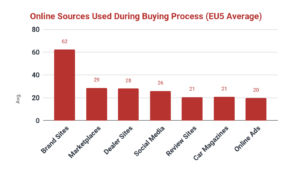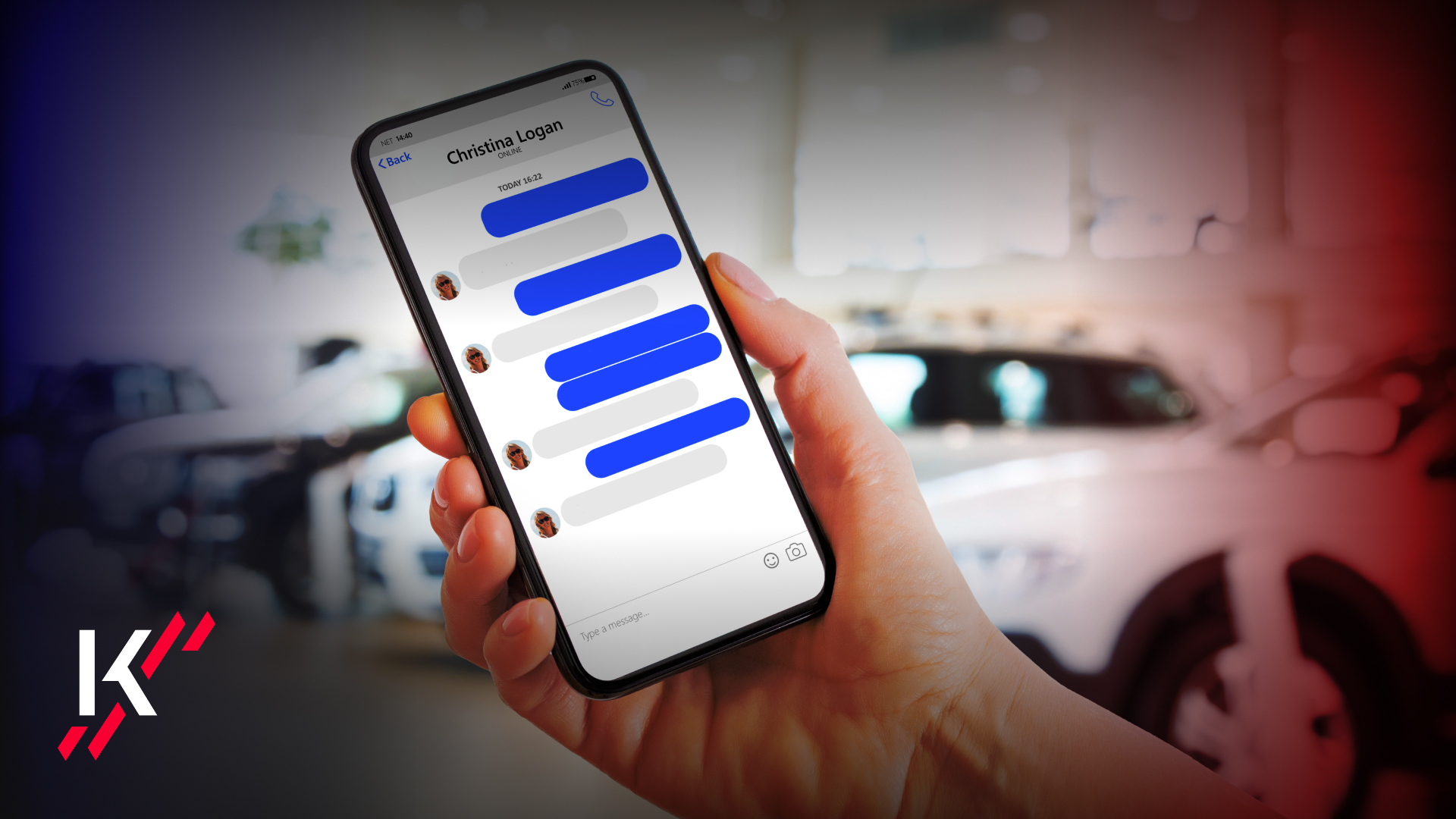by Brian Coleman – Chief Strategy Officer, MotorK
If you read the news these days about automotive sales and marketing, it seems that everyone is selling cars online or about to do so.
Tesla just announced plans to close most of its showrooms and switch to online-only sales. BMW, Peugeot, Toyota, Fiat and others are all piloting some form of online sales in at least one European market. Meanwhile, waiting in the wings is online retailing giant Amazon, which is expected to move aggressively into car sales in the near future.
And yet, in MotorK’s recently published survey of franchised dealer websites in the five major European markets found a major gap between the much-hyped move to online sales and the digital retail capabilities of brands and their networks.
For example, more than half of franchised dealer sites don’t even list the new car stock — let alone provide the tools necessary to make a purchase decision. Indeed, 86% of franchised dealer sites lack trade-in valuation or loan simulation functionality. Less than 5% have live chat. And it’s not like these features are found on most brand websites either.
In the few weeks since MotorK published its benchmark study of franchised dealer websites, numerous brands and retailers reached out to discuss the results. Many people raise interesting questions about the role of dealer websites and their future in the automotive sales and distribution process.
These conversations are centered on four major topics that are worth exploring in detail.
1. Dealer Sites Matter. A Lot.
A common question from brand executives is whether dealer websites even matter given a future of online sales. The reality is that they do matter — a lot — for a couple of reasons.
The first point is that until a brand genuinely switches to a sales model with a single, centrally coordinated platform for automotive sales, the dealers will continue to play a crucial role in the process. And as long as that’s the case, dealer websites will also serve an important function.
On average, 28% of new car buyers visit a dealer site in advance of purchase, according to Google’s latest research study. (See table below)

Note that dealer websites are used more than social media platforms (such as Facebook or Instagram), third-party review sites and car magazine sites. Likewise, they are more important than online advertising.
Yet most manufacturers spend less time on dealer sites than these other factors. This appears to be a missed opportunity, which leads to the second issue raised in our conversations.
2. The Role Of The Dealer Site
In general, consumers don’t go to a dealer site until they are further down the purchase funnel. That means they have a reasonable idea of what they want, and are looking to answer questions like whether they can afford it and where to buy it. (And yet, in most markets analysed in MotorK study, at least 5 brands still lack an official franchised dealer site structure).
The study shows that dealer sites do a good job of answering the latter question. By far the highest scores achieved were for dealer locator pages. This is to be expected.
But some of the worst scores in the study were for the ability of dealer sites to answer questions of affordability. It’s not enough to simply show the price or a special offer. Prospects want to know what they will get for trading in their old vehicle or what the monthly payments would be. Just 15% of the sites studied by MotorK have a financial calculator and only 13% have a trade-in valuation tool.
These tools can make a big difference. Indeed, MotorK’s internal data shows that when prospects engage with such tools, the likelihood of their converting from a visitor to a hot lead increases dramatically. For example, conversion rates jump from below 5% to 24% when customers engage with a trade-in valuation tool.
3. Dealer Sites Are An Ideal (And Underused) Place for Pilot Projects
Brands appear to be betting on a “big bang” when it comes to online sales — changing everything at once — rather than a gradual evolution of their existing. To use a familiar cliche, car brands are planning on running before they’ve learned to walk.
Indeed, many of the pilot projects brands are running today focus on a single model, and executives are thrilled to learn that they’ve sold 20 or 30 vehicles from customers who arrived on a site and clicked “Buy Now.” But the reality is that most customers still need guidance through what is an expensive and complex decision. Dealers are in the best position to do this if given the tools.
Websites, of course, are the tip of the iceberg when it comes to online car sales. There’s a host of other technical and operational issues that need to be addressed — from lead management processes to pricing decisions to fulfilment and delivery. None of this is likely to be ready from one day to the next.

Which is why it would seem logical for brands to go beyond experimenting with selling a single vehicle online in a pilot market. Dealer sites — and the operations behind them — are an ideal situation for experimenting and learning about consumer expectations and how to fulfil them.
For example, nurturing customers through digital conversations is one area for experimentation. Tools like online chat (whether text or video) allow salespeople or business development staff to engage remotely with prospects as they work through their purchase decision.
4. Getting Real About the Future.
It’s easy to get dragged into a conversation about a future in which all automotive (or mobility) purchases will be made online. Go to any industry conference and people will start talking about Amazon or Carvana.
But most thoughtful people recognise that the future is almost certainly going to be omnichannel. Even Amazon recognises this, as proven by its recent moves to open retail outlets and purchase Whole Foods. If this is true for books and groceries, it’s certainly true for more complex items like motor vehicles.
If automotive brands are to learn anything from other industries, it’s that customers today already enjoy a seamless transition from online to store. In many sectors — from consumer electronics to furniture to clothing — customers can browse online, see the stock in local stores and place orders that can be delivered to their home or picked up at a retailer. They can also apply for financing. If they can do that for a €200 digital camera or a €20 t-shirt, It’s only reasonable for them to expect the same experience when purchasing a €20,000 vehicle.
It’s clear that the industry is on the verge of the most exciting and dramatic shift in automotive sales and distribution in a century. There are many ways that the future network could take shape. Agency models, in which retailers receive a flat fee for delivering a car ordered from the manufacturer, are receiving a lot of attention in Europe.
But regardless of the direction a manufacturer chooses, brands need to engage with their retail partners to make it a success. This means a genuine partnership in developing retail models, piloting new processes and, most importantly of all, understanding their customers.
Dealer websites are not just a vital tool in current success, but represent an ideal platform for experimentation and learning. Done right, they could be a cornerstone in the development of future success.








